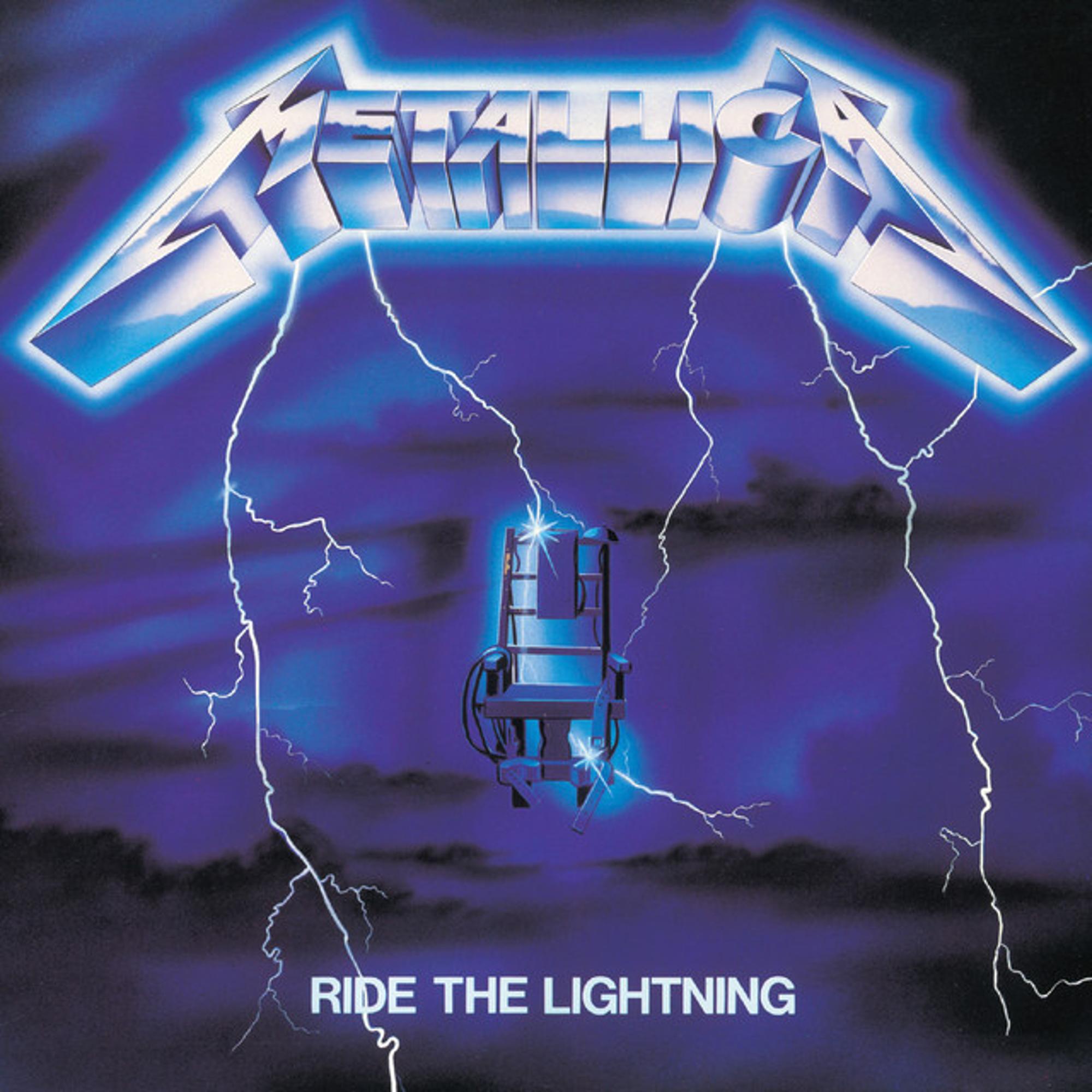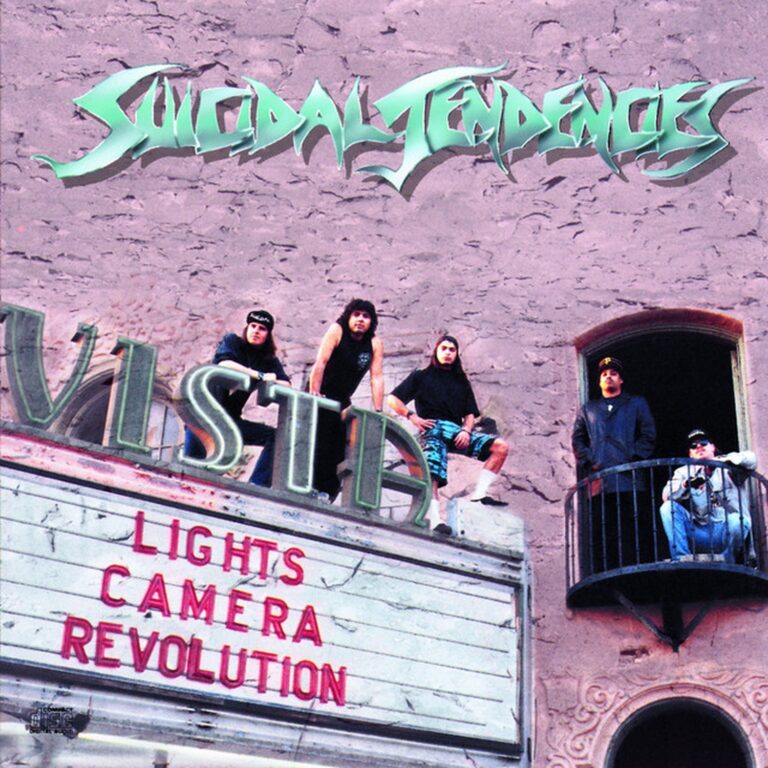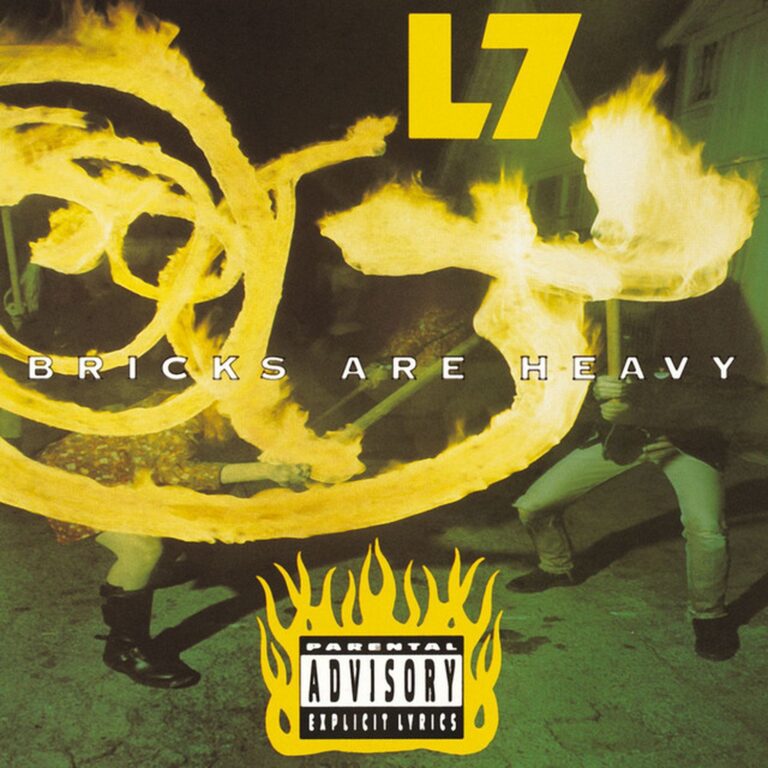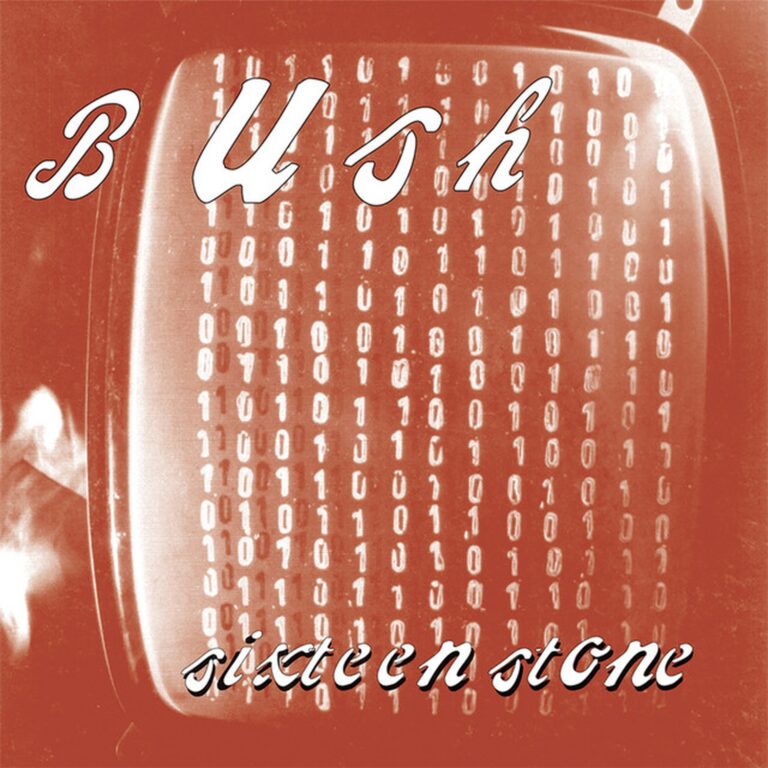
Introduction
Some albums do more than capture a moment—they change the course of music. Metallica’s Ride The Lightning is one of those rare records. Released in 1984, it didn’t just push thrash metal forward; it redefined what heavy music could be. Even now, four decades later, it’s an album that still shapes the sound and spirit of metal bands everywhere.
In this article, I’ll take you through every aspect of Ride The Lightning. We’ll cover its origins, recording process, and commercial success. I’ll break down each track, explore the lyrics, and discuss the tour that followed. We’ll look at the album’s influences, legacy, and how it’s used in media. There are facts, stories, and a detailed look at why this album still matters. If you want to understand Ride The Lightning inside out, you’re in the right place.
| Attribute | Details |
|---|---|
| Release date | 27 July 1984 |
| Album title | Ride The Lightning |
| Genre | Thrash metal |
| Total runtime | 47:26 |
| Number of tracks | 8 |
| Record label | Megaforce Records (original), Elektra Records (reissue) |
| Recording studio | Sweet Silence Studios, Copenhagen, Denmark |
| Producer(s) | Metallica, Flemming Rasmussen, Mark Whitaker |
When it landed, Ride The Lightning was a revelation. Q magazine said it “redefined thrash metal’s boundaries.” Kerrang! praised its “maturity and musical intelligence.” AllMusic called it an “all-time metal classic.” In the words of Kirk Hammett, “The album’s sound still holds up well sonically after all these years” (Guitar World, 2015). Jason Newsted, who joined the band after Cliff Burton’s death, described it as “one of the best albums ever” in a 1991 interview. Even now, it’s seen as a key moment in heavy music history.
Let’s dive into the story behind Ride The Lightning and find out why it’s still essential listening for anyone who cares about heavy music.
The Genesis of “Ride The Lightning”
Before Ride The Lightning, Metallica were hungry, broke, and driven. Their debut, Kill ‘Em All, made a mark in 1983, but it was raw and straightforward. By late 1983, they were already playing new material live, desperate to show they could do more than just speed and aggression. The thrash scene was exploding, but Metallica wanted to prove they had depth and ambition.
In this period, Metallica’s line-up was: James Hetfield (vocals, rhythm guitar), Lars Ulrich (drums), Cliff Burton (bass), and Kirk Hammett (lead guitar). Hetfield, Ulrich, and Burton were the core songwriters, but this album marked the first time Hammett received writing credits. Dave Mustaine, the original lead guitarist, was long gone but still had credits on two tracks—his riffs lived on in the title track and “The Call of Ktulu.”
Financially, the band was struggling. The European label Music for Nations paid for the studio, as Megaforce Records couldn’t cover the full cost. The budget was supposed to be $20,000 but ballooned to over $30,000. The band often ate one meal a day, slept in the studio, and borrowed gear after a theft in Boston. As Hetfield recalled, “We were just trying to survive, sleeping in the studio, eating what we could” (Wikipedia, sourced from interviews).
Here’s a breakdown of the band members and their roles on the album:
| Member | Instrument(s) / Roles |
|---|---|
| James Hetfield | Vocals, rhythm guitar, acoustic guitar on “Fight Fire With Fire” and “Fade to Black” |
| Lars Ulrich | Drums, backing vocals (“Ride the Lightning”, “Creeping Death”), anvil on “For Whom the Bell Tolls” |
| Cliff Burton | Bass, backing vocals (“Creeping Death”) |
| Kirk Hammett | Lead guitar, backing vocals (“Creeping Death”) |
The album’s title came from Stephen King’s novel The Stand, referring to execution by electric chair. The cover art, an electric chair struck by lightning, was the band’s concept, brought to life by AD Artists. This visual became one of the most recognisable in metal history, echoing the album’s themes of power, fate, and death.
There was tension, too. The band wanted to expand their sound, but the label pushed for a radio-friendly song—this led to “Escape,” which Hetfield later called his least favourite Metallica track. Despite this, the creative energy was high, with Cliff Burton’s musical knowledge bringing in new harmonies and complexity. As Kirk Hammett put it, “Cliff was an anomaly… he played bass with a guitar-like approach, always writing harmonies and runs” (Guitar World, 2015).
Recording Process
Recording began on 20 February 1984 at Sweet Silence Studios in Copenhagen, Denmark. Producer Flemming Rasmussen, chosen for his work with Rainbow, brought a professional edge. The sessions lasted just over three weeks, with instruments recorded separately. Hetfield tracked all rhythm guitars, while drums were recorded in an empty warehouse to get that huge reverb sound.
Rasmussen’s background in European hard rock helped shape the album’s sound. He was not only an engineer but also a guide, encouraging the band to layer harmonies and experiment with dynamics. Mark Whitaker assisted with production and managed the band’s live sound. Mastering was handled by Tom Coyne (Megaforce), Tim Young (Music for Nations), and Bob Ludwig (Elektra), ensuring the album sounded great on both sides of the Atlantic.
The band faced challenges. Their gear had been stolen, so they borrowed equipment from Anthrax and Ratt. This forced them to tweak their sound. According to a Gear Page forum, Hetfield’s rhythm tone came from a Marshall JCM 800 2203 head, Marshall 4×12 cabs with Celestion G12-65 speakers, and an Ibanez Tube Screamer pedal—used here for the last time. The guitar was a 1984 Gibson Explorer with Dirty Fingers pickups. The cold, bright tone was partly due to studio conditions and the heavy use of reverb, as discussed in several Reddit threads.
Here’s a table of likely hardware and studio techniques used:
| Equipment / Studio Element | Details / Notes |
|---|---|
| Main guitar amp | Marshall JCM 800 2203 (100W head, some modded) |
| Guitar cabinets | Marshall 4×12 with Celestion G12-65 speakers (1982) |
| Distortion pedal | Ibanez Tube Screamer TS9 (used by Hetfield for last time) |
| Guitars | 1984 Gibson Explorer (Dirty Fingers pickups), others as available |
| Bass | Aria Pro II SB-1000 (Cliff Burton) |
| Drums | Tama Imperialstar kit, recorded in warehouse for reverb |
| Microphones | Assumed Shure SM57s (guitar cabs), Neumann U87 (vocals), AKG D112 (kick), others typical of Sweet Silence Studios |
| Mixing desk | Likely Neve or SSL console (not explicitly confirmed) |
| Outboard gear | Likely UREI 1176, LA-2A compressors, Lexicon reverb (standard at Sweet Silence) |
| Unique features | Slightly sharp tuning due to studio tape speed, heavy use of reverb, overdubbed anvil (For Whom the Bell Tolls) |
Rasmussen was a hands-on producer. He pushed the band to try new things—acoustic intros, layered solos, and more complex arrangements. The studio’s gear and layout allowed for a cleaner, brighter sound than their debut. The band, still young and eager, embraced these changes, setting the stage for their future evolution.
Next, here’s a look at other albums produced by Flemming Rasmussen:
| Producer | Artist | Album | Year |
|---|---|---|---|
| Flemming Rasmussen | Rainbow | Difficult to Cure | 1981 |
| Flemming Rasmussen | Morbid Angel | Covenant | 1993 |
| Flemming Rasmussen | Blind Guardian | Imaginations from the Other Side | 1995 |
| Flemming Rasmussen | Blind Guardian | Nightfall in Middle-Earth | 1998 |
These albums show Rasmussen’s range—from classic rock with Rainbow to death metal with Morbid Angel and power metal with Blind Guardian. Each project has a crisp, powerful sound, reflecting his attention to detail and his knack for drawing out the best in every band.
Commercial Performance and Reception
When Ride The Lightning first hit the shelves, it didn’t break the charts straight away. The initial US pressing was just 75,000 copies, and by late 1984, it had sold 85,000 in Europe. After Metallica signed with Elektra Records, the album re-entered the US Billboard 200 at number 100 and later climbed to number 48. In 2024, the album saw a 160% sales surge during its 40th anniversary week, selling 3,900 units and re-entering the US charts at number 24 (MyRadioLink, 2024).
Here’s a table of Metallica’s studio albums, their release years, and sales data where available. Ride The Lightning is highlighted:
| Album | Year | Sales Data |
|---|---|---|
| Kill ‘Em All | 1983 | 3.1 million (US) |
| Ride The Lightning | 1984 | 6.95 million (US, RIAA 6x Platinum), 4.8 million (US SoundScan), 3x Platinum (Australia), Platinum (Canada, Germany, UK), Gold (Italy), Platinum (Poland) |
| Master of Puppets | 1986 | 6 million (US) |
| …And Justice for All | 1988 | 5.9 million (US) |
| Metallica (Black Album) | 1991 | 16 million (US) |
| Load | 1996 | 5 million (US) |
| Reload | 1997 | 4 million (US) |
| St. Anger | 2003 | 2 million (US) |
| Death Magnetic | 2008 | 1.7 million (US) |
| Hardwired… to Self-Destruct | 2016 | 1.1 million (US) |
| 72 Seasons | 2023 | Not available |
The album earned multiple awards and certifications: 6x Platinum in the US, 3x Platinum in Australia, Platinum in Canada, Germany, and the UK, and Gold in Italy. Critics responded with enthusiasm. Rolling Stone ranked it #11 on their “100 Greatest Metal Albums of All Time” in 2017. IGN placed it at #5 on their “Top 25 Metal Albums.” Guitar World said it “reset metal’s course.”
In 1984, heavy music saw several key releases. Other notable albums from that year include:
- Stay Hungry by Twisted Sister
- Defenders of the Faith by Judas Priest
- Powerslave by Iron Maiden
- Love at First Sting by Scorpions
- Animalize by Kiss
- 1984 by Van Halen
- The Warning by Queensrÿche
- Condition Critical by Quiet Riot
- Hail to England by Manowar
- Slide It In by Whitesnake
These records, alongside Ride The Lightning, made 1984 a pivotal year for heavy music. In the same year, the genre also saw the formation of bands like Blind Guardian, Soundgarden, and Sepultura, and the release of This is Spinal Tap, the cult mockumentary that poked fun at the rock world. Rick Allen of Def Leppard lost his arm in a car accident, a moment that would later become legendary in metal history. Deep Purple reunited, and the world’s first minivans rolled off the Chrysler production line. In short, 1984 was a year of transformation, not just for Metallica but for the entire music world.
Track Analysis
Ride The Lightning produced one official single, “Creeping Death,” released on 23 November 1984. It was written by Hetfield, Ulrich, Burton, and Hammett. The album’s tracks are known for their depth and variety—power ballads, thrash assaults, and an epic instrumental. Each song tells a story, both musically and lyrically.
Here’s a table listing each track, its length, and writing credits. Singles are marked with an asterisk.
| Track Name | Length (min:sec) | Writing Credit |
|---|---|---|
| Fight Fire With Fire | 4:44 | Hetfield, Ulrich, Burton |
| Ride The Lightning | 6:37 | Hetfield, Ulrich, Burton, Mustaine |
| For Whom The Bell Tolls | 5:11 | Hetfield, Ulrich, Burton |
| Fade To Black | 6:55 | Hetfield, Ulrich, Burton, Hammett |
| Trapped Under Ice | 4:04 | Hetfield, Ulrich, Hammett |
| Escape | 4:24 | Hetfield, Ulrich, Hammett |
| Creeping Death* | 6:36 | Hetfield, Ulrich, Burton, Hammett |
| The Call Of Ktulu | 8:55 | Hetfield, Ulrich, Burton, Mustaine |
Note: The only official single was “Creeping Death,” which did not chart in the US but became a live staple and fan favourite. “Fade To Black” and “For Whom The Bell Tolls” have since become signature songs, often played at every show.
Song Meaning and Lyrics
The lyrics on Ride The Lightning moved beyond the typical metal themes of violence and rebellion. They explored war, death, existential dread, and personal loss. The singles in particular show this depth.
“Creeping Death” tells the story of the biblical plagues in Egypt, especially the death of the firstborn. The lyrics reference the Hebrews’ suffering, Moses as the deliverer, and the angel of death passing over marked doors (“Blood, lamb’s blood painted door. I shall pass”). The line “Die by my hand, I creep across the land, Killing first-born man” directly echoes the final plague (see Veritas Et Vita and Ultimate Metallica). The “Die! Die! Die!” chant was adapted from a riff Kirk Hammett wrote in Exodus. This song has been played live over 1,500 times and is a highlight of every Metallica show.
“Fade To Black” is one of the earliest thrash metal ballads, written after the band’s gear was stolen. The lyrics deal with depression and suicidal thoughts: “Emptiness is filling me / To the point of agony.” James Hetfield later said the song reflected his feelings of loss after the theft of a cherished amplifier, a gift from his late mother (Psychology Today). The song’s somber tone and reflective lyrics have made it a source of comfort for many fans dealing with dark times.
“For Whom The Bell Tolls” was inspired by Ernest Hemingway’s novel about the horrors of war. The lyrics (“Take a look to the sky just before you die, it’s the last time you will”) paint a vivid picture of battlefield chaos and futility. Cliff Burton’s distorted bass intro and the tolling bell create an atmosphere of dread and inevitability. The song’s themes remain relevant, as listeners often link its message to current conflicts (Reddit).
Songwriting was a collaborative process. Hetfield and Ulrich were the main lyricists, but Burton and Hammett brought new musical ideas and complexity. Mustaine’s influence is felt in the more intricate riffs and structures, even though he was no longer in the band. The result is an album that feels both raw and sophisticated.
Touring and Promotion of Ride The Lightning
Promotion for Ride The Lightning was relentless. The band planned a UK tour with Exciter and The Rods in March and April 1984, but poor ticket sales led to its cancellation. Instead, Metallica hit the road on the “Bang That Head That Doesn’t Bang” European tour starting 16 November 1984, with Tank as support. They followed up with a North American tour, co-headlining with W.A.S.P. and then headlining with Armored Saint opening. Live shows were the band’s main promotional tool, as radio play was limited.
The tour for Ride The Lightning included more than 180 shows across Europe and North America. Notable performances included Monsters of Rock at Castle Donington in August 1985, where they played to 70,000 fans, and Day on the Green in Oakland, performing for 90,000 people. The last show before recording Master of Puppets was at the Loreley Metal Hammer Festival in Germany, headlined by Venom. Here, Metallica previewed “Disposable Heroes” and “Master of Puppets” for the first time.
During 1984, Metallica shared the stage with Tank, W.A.S.P., Armored Saint, Y&T, Metal Church, Exodus, and Megadeth (the latter featuring ex-guitarist Dave Mustaine). The tour was gruelling, with the band often sleeping in the studio or fans’ homes, but it built their reputation as a fierce live act and brought the album to new audiences worldwide.
Influences and Legacy
Ride The Lightning didn’t come out of nowhere. Metallica drew inspiration from British heavy metal bands like Iron Maiden, Judas Priest, and Diamond Head, as well as punk and hardcore acts such as Discharge and the Misfits. Cliff Burton brought in a love of classical music and progressive rock, which can be heard in the album’s complex arrangements and harmonies.
Here’s a table of influences and the artists who were later influenced by this album:
| Influences on “Ride The Lightning” | Artists Influenced by “Ride The Lightning” |
|---|---|
| Iron Maiden | Slayer |
| Judas Priest | Megadeth |
| Diamond Head | Testament |
| Motörhead | Anthrax |
| Discharge | Sepultura |
| Misfits | Trivium |
| Progressive rock | Lamb of God |
| Classical music (Cliff Burton) | Countless modern metal bands |
Released in 1984, Ride The Lightning landed during a year of change. Globally, 1984 saw the miners’ strike in the UK, the Los Angeles Olympics, the introduction of the Macintosh computer, and the launch of Band Aid’s “Do They Know It’s Christmas?” In music, Van Halen released 1984, Queen put out The Works, and Iron Maiden dropped Powerslave. The world was changing fast, and Metallica were right there, reshaping heavy music in their own image.
Five Things About Ride The Lightning
Every classic album has its stories and secrets. Here are five fully verified facts about Ride The Lightning:
| Fact | Details |
|---|---|
| Title inspiration | Came from Stephen King’s novel The Stand, referencing execution by electric chair. |
| Last album with Dave Mustaine writing credits | Mustaine was credited on “Ride The Lightning” and “The Call of Ktulu.” |
| First Metallica album with Kirk Hammett songwriting | Hammett contributed to “Trapped Under Ice,” “Escape,” and “Creeping Death.” |
| “Escape” was written under label pressure | Hetfield has said it was the only song written to please the label and he dislikes it. |
| Recorded on a tight budget | Budget was $20,000 but went over $30,000; the band slept in the studio and borrowed gear after a theft. |
Media and Television Usage
Songs from Ride The Lightning have been used in various films, TV shows, and games. Here’s a table of notable media appearances:
| Song Title | Media Appearance | Year |
|---|---|---|
| Creeping Death | Old School (film) | 2003 |
| Fade To Black | Guitar Hero: Metallica (video game) | 2009 |
| For Whom The Bell Tolls | Zombieland (film) | 2009 |
| For Whom The Bell Tolls | Daddy’s Home (film) | 2015 |
| For Whom The Bell Tolls | Triple Frontier (film) | 2019 |
Critical Reviews and Retrospectives
Ride The Lightning has received glowing reviews over the years. Critics have praised its ambition, complexity, and influence. Here’s a table with some notable reviews and quotes:
| Publication | Review Score | Notable Quote | Link |
|---|---|---|---|
| AllMusic | 5/5 | “An all-time metal classic… rich musical imagination and sophisticated lyrics.” | AllMusic Review |
| Rolling Stone Album Guide | 4.5/5 | “A major step forward, setting the concept for Metallica’s next two albums.” | Rolling Stone Review |
| Kerrang! | 5/5 | “Maturity and musical intelligence that expanded heavy metal’s boundaries.” | Kerrang! Metallica |
| Q Magazine | N/A | “Redefined thrash metal’s boundaries.” | Metallica.com |
| Sputnikmusic | 4.5/5 | “Hetfield’s vocals, the album’s charm and power are undeniable.” | Sputnikmusic Review |
After Ride The Lightning
After Ride The Lightning, Metallica’s star continued to rise. Their next album, Master of Puppets, released in 1986, is widely considered one of the greatest metal albums ever. Tragedy struck in 1986 when bassist Cliff Burton died in a bus accident. Jason Newsted joined as bassist, and the band kept pushing forward with albums like …And Justice for All and the mainstream breakthrough Metallica (The Black Album).
Metallica’s line-up has changed over the years, but James Hetfield and Lars Ulrich remain at the core. As of April 2025, the band is still active, touring globally and working on new material. Their latest album, 72 Seasons, was released in 2023, and the M72 World Tour continues into 2025, showing no signs of slowing down (Kerrang!).
Remasters and Reissues
There are no specific remasters or reissues detailed in the provided data sources for Ride The Lightning. However, it is known that a deluxe box set was released in 2016, featuring remastered audio, live recordings, interviews, demos, and a DVD of live shows and band interviews. This set includes the original album on vinyl and CD, a picture disc, and six CDs of bonus content, plus a DVD. The remaster was handled by Howie Weinberg, with new mastering and packaging to appeal to collectors and new fans alike.
Conclusion
Ride The Lightning is more than just a milestone in Metallica’s career—it’s a touchstone for heavy music as a whole. Its blend of aggression, melody, and lyrical depth has influenced countless bands and inspired generations of fans. Even today, the album’s songs fill arenas, appear in films, and get new listeners hooked on metal. With Metallica still active, touring, and creating, Ride The Lightning stands as a reminder of what can happen when a band pushes past its limits and dares to try something new.
Further Reading
For more on Metallica and related content:
- The Unlikely Success Story of Metallica (blog article)
- Unleashing Metallica’s ‘Kill ‘Em All’: A Thrash Revolution (blog article)
- Master of Puppets: Unraveling Metallica’s Pivotal Album (blog article)
- Death Magnetic: Metallica’s Thrash Metal Revival (blog article)
- Metallica’s …And Justice for All: An Essential Album Analysis (blog article)
- The Making of Reload: Metallica’s Evolutionary Leap (blog article)
- The Evolution of Load – Metallica’s Bold Move (blog article)
- Metallica’s Garage Inc.: The Story Behind the Covers Album (blog article)
- Unveiling Metallica: The Iconic Black Album’s Legacy (blog article)
- Ride The Lightning on Wikipedia
- Official Metallica website
- Elektra Records website
Let us know in the comments what your thoughts are on Ride The Lightning by Metallica. Did we miss anything? Share your experiences and join the conversation!



